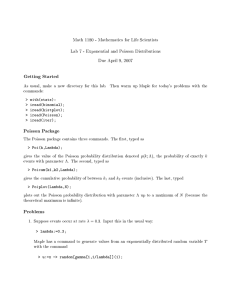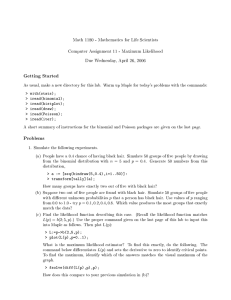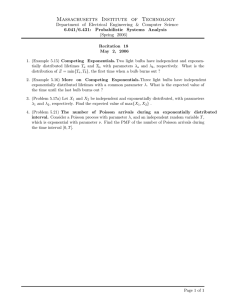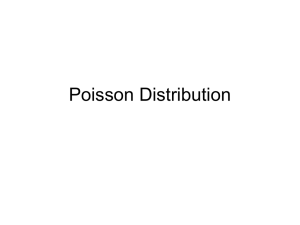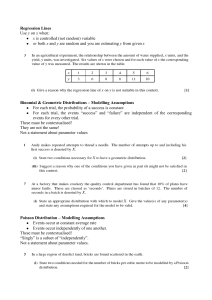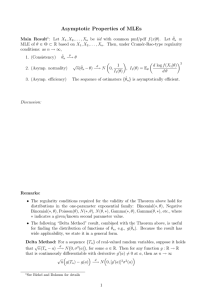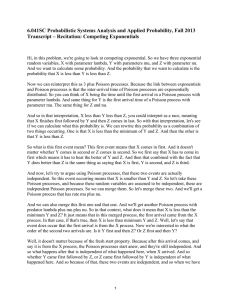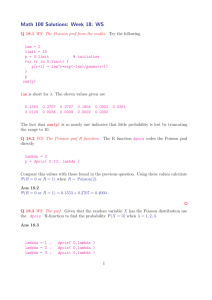MATH 1180 MATHEMATICS FOR LIFE SCIENTISTS Computer Assignment VIII Due April 6, 2004
advertisement
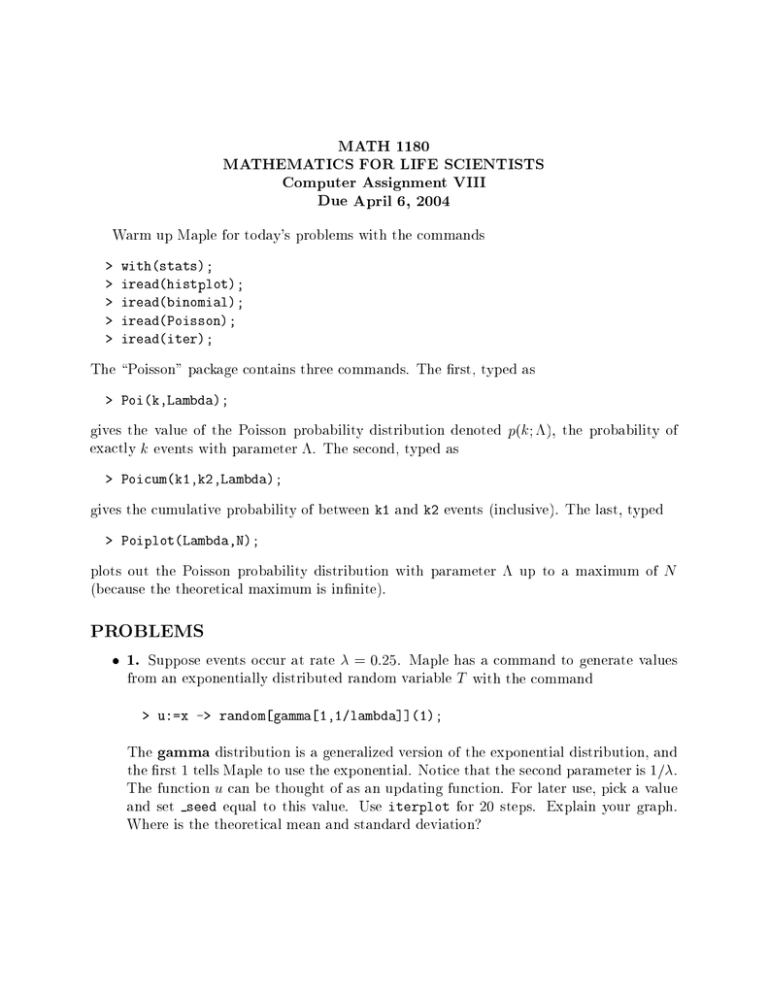
MATH 1180 MATHEMATICS FOR LIFE SCIENTISTS Computer Assignment VIII Due April 6, 2004 Warm up Maple for today's problems with the commands > > > > > with(stats); iread(histplot); iread(binomial); iread(Poisson); iread(iter); The \Poisson" package contains three commands. The rst, typed as > Poi(k,Lambda); gives the value of the Poisson probability distribution denoted p(k; ), the probability of exactly k events with parameter . The second, typed as > Poicum(k1,k2,Lambda); gives the cumulative probability of between k1 and k2 events (inclusive). The last, typed > Poiplot(Lambda,N); plots out the Poisson probability distribution with parameter up to a maximum of N (because the theoretical maximum is innite). PROBLEMS 1. Suppose events occur at rate = 0:25. Maple has a command to generate values from an exponentially distributed random variable T with the command > u:=x -> random[gamma[1,1/lambda]](1); The gamma distribution is a generalized version of the exponential distribution, and the rst 1 tells Maple to use the exponential. Notice that the second parameter is 1=. The function u can be thought of as an updating function. For later use, pick a value and set seed equal to this value. Use iterplot for 20 steps. Explain your graph. Where is the theoretical mean and standard deviation? 2. The exponentially distributed random variable T describes the waiting time between events. If the nth event occurs at time t, the n + 1st event occurs at time t + T . The updating function describing this process is > g := t -> t+u(); Reset seed to your chosen value, and run iterplot using the function g for 20 steps. How many events occurred by time 20? Using the picture from problem 1, mark the two longest waits and their durations. Using your computation of the average waiting time, sketch the line that should lie close to your graph. 3. The number of events at time 20 should be described by a Poisson distribution with parameter = 20. Use the Poiplot command to plot this distribution up to a reasonable upper bound N . Using the number of events that occurred by time 20 in problem 2 as k, compute the probability of exactly k, fewer than k, and more than k events (for the last pick a reasonable upper bound k2). Indicate the areas associated with each of these events on your graph. Do you consider your result from problem 2 peculiar? 4. Find a binomial distribution that approximates the Poisson in the previous problem. Plot it with the binplot command. How close are the two distributions? Compare the probabilities at a couple of points. Which distribution has lower variance and why?
